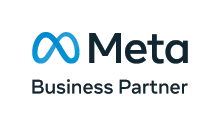Google has announced several changes planned for 2023, starting in May, when similar audience segments will no longer be generated. Similar audiences have historically been a valuable source of growth for advertisers. The loss of this feature is likely to be significant.
Existing campaigns with those segments will still function for a few more months. From August 2023, similar audience segments will be completely removed from existing campaigns.
Advertisers can currently create similar audiences on Google Ads‘ Audience Manager. For instance, advertisers can target similar/lookalike audiences of their current customers for targeting in remarketing campaigns.
Why is Google sunsetting similar audiences?
Regulatory and consumer pressure around privacy are driving this change.
Most similar audiences are based on a seed audience fed to Google via third-party cookies. For example, when a user completes a purchase, a cookie from the advertiser will inform a third-party (in this case, Google) that a purchase has taken place, along with some personal information about the individual making the purchase.
As third-party cookies are becoming obsolete due to privacy concerns, similar audiences need to go too.
What replaces similar audiences?
Increased automation is Google’s offered replacement for similar audiences.
In a nutshell, advertisers should let Google automatically decide on the best audiences they should advertise to, using the following tools:
- Optimized targeting for Discovery, Display and Video action campaigns
- Audience expansion for Video reach or consideration campaigns
- Smart bidding for Search and Shopping campaigns
Just like similar audiences, those tools allow advertisers to reach new users beyond existing pre-defined parameters. However, these new audiences are not based on information provided by third-party cookies and are therefore privacy safe.
Both the alternatives proposed by Google are newer and not well-tested by all advertisers. Optimized targeting, in particular, works well with first-party data, but for advertisers who don’t have millions or even tens of thousands of customers or email subscribers, that’s not much help.
The message is clear – if you wish to compete next year and in 2024, you need to start building up your own audience data now!
Advertisers should also start trying out the audience expansion tools above, to test their effectiveness. Keep in mind, as with all machine learning tools, there is an initial learning phase. Testing and implementing these audience expansions now will allow for a smooth transition next year.
About the Author
Jérôme is the International Director at AccuraCast. A multilingual digital marketing specialist, with a very strong background in data and finance, Jérôme has previously worked at Euromoney and Geosys, where he did number-crunching for NASA.











